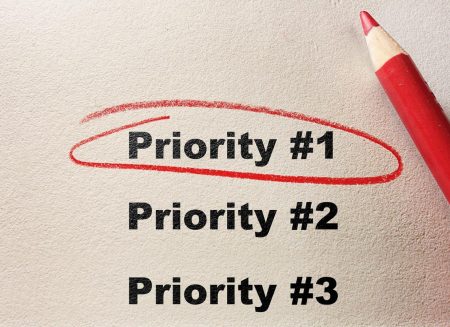It takes a lot of money to be financially secure in old age. Federal Reserve data suggests that to be financially secure in retirement, people will likely need more than $500,000 in savings. In assessing how retirees are faring, it is important to go beyond simply asking people how they are feeling about their situation and look at objective measures of well-being.
The Fed’s Survey of Household Economics and Decisionmaking is designed to capture various aspects of people’s financial security. The SHED asks people how they feel about their financial situation and large numbers of retirees report they are either “financially comfortable” or “doing okay financially.” The problem is this is a subjective (and not too accurate) way to get at the question of people’s actual financial well-being in retirement.
While there is no single, universal definition of financial security, a more objective and reasonable approach would start from the idea that financially secure adults have no trouble paying their bills on a regular basis. That means no difficulties paying their bills in the recent past, no problems paying their bills right now and they will be able to handle small emergencies in the future, if they arise.
Fortunately, the SHED includes recent indicators of trouble paying bills such as credit card balances, medical debt and a reliance on predatory sources of financing like pawn shops and payday lenders. In addition, it asks whether people have skipped health care because of costs in the past 12 months. As to current difficulties, the SHED survey specifically asks about people’s ability to pay all of their bills over the past 12 months.
Finally, the SHED asks a series of questions about people’s ability to pay for small emergencies such as covering a $400 emergency with cash or savings. A financially secure retiree can be defined as a person who has no credit card balances, no medical debt and no recent use of predatory financing, and can pay all bills and manage a $400 emergency. To be clear, this definition leaves out some aspects of financial security such as whether people can afford to repair their houses. But it likely is a good approximation of what people need to be financially secure in retirement.
Only About Half Of Retirees Are Financially Secure
The data show that roughly half of retirees are financially secure by this definition. From 2019 to 2022, 51% of retirees between ages 65 and 74 were objectively financially secure. In terms of how this lines up with the subjective measure of financial well-being, 73% of retirees who said they were “financially comfortable” were also financially secure, while 58% of those who said they were “doing okay” were financially insecure. Living comfortably and doing okay are two quite different things when it comes to people’s retirement finances. The bottom line is almost half of retirees struggled with some aspects of their finances in recent years. These folks are not comfortable, but rather they are scraping by.
The SHED data suggests that financial security increases with older age, but there’s a catch. Almost two thirds of those 75 and older were financially secure from 2019 to 2022. But that improvement in financial security with age overlooks the fact that those with worse finances are also more likely to die at younger ages. Skipping health care after all is a key aspect of being financially insecure. By now, it is well established that wealth and health go hand in hand. Those who are better off financially, on average, get the advantage of longer lives. So, the apparent improvement in financial security past age 75 actually reflects what economists call “survivor bias.” That is, the data are skewed by those lucky enough to still be alive at older ages, which disproportionately consists of people with greater levels of wealth.
It Takes More Than $500,000 Upon Retiring For A Person To Have A Financially Secure Retirement
So, exactly how much money does it take to achieve financial security in retirement? The SHED data provide some rough sense. As shown in the chart, the largest group of financially secure retirees (31%) had more than $1 million, the second largest group (19%) had between $500,000 and $999,999 and the third largest group (17%) had between $250,000 and $499,999. That is, roughly two-thirds of financially secure retirees had at least $250,000 in savings. It’s important to note that these savings amounts are for individuals, not couples. Many financially secure retiree couples will have substantially more than the amounts shown. Conversely, very few retirees with low savings were financially secure by the above objective measure. Retirees with less than $50,000 in savings represented only about 1 in 10 financially secure retirees but 4 in 10 financially insecure retirees.
Another way of looking at the same data is to see which level of retirement savings includes an overwhelming majority of retirees — say, two-thirds or three-quarters — who are financially secure. For retirees with at least $250,000, 67% are financially secure; for those with at least $500,000, 74% are financially secure; and for those with more than $1 million, 82% are financially secure. The data tell the same story that retirees really only reach a safe financial harbor with substantial amounts of money well above $250,000.
Most people will probably need more than $500,000 in savings at retirement to be financially secure. After all, the numbers shown above are for people ages 65 to 74 who have been retired for a while and who have already drawn down some of their savings. In fact, more than two thirds of people in this age group have been retired for five years or more. The data for retiree savings then substantially understate what people had when they left the workforce and started to retire. It is safe to say that today’s retirees would have needed well more than $500,000 in savings to be financially secure.
Financially Secure Retirees Have Many Other Savings And Less Debt Than Financially Insecure Ones
Further, these data only refer to retirement savings. They exclude other key assets such as an owner-occupied house; traditional defined benefit pensions; additional financial assets in checking, savings and brokerage accounts; as well as other investments such as rental real estate and privately owned businesses. Those who do well in retirement typically will have many additional assets that allow them to stay financially secure as they get older.
The financial security gap between those who are financially secure and those who are insecure is much larger than the numbers suggest. This analysis focuses only on the asset side of households’ financial ledger. It ignores the debt many retirees owe in mortgages and student loans, especially among financially insecure households, which widens the wealth gap even further between the two groups. Among financially secure retirees, 31% still had a mortgage, compared to 45% of financially insecure retirees. And only 3% of financially secure retirees owed student loans for their own education or that of a family member, while 9% of financially insecure retirees did. Outstanding debt puts financial security further out of reach for many people.
Policy Needs To Address The Gap Between The Haves And Have-Nots For Full Retirement Security
In the end, the SHED data on retirement finances show an expected picture of the haves and have-nots. Among retirees 65 to 74 years old, about half are financially secure, while the other half struggle to regularly pay their bills. While many in this latter category may report they are “doing okay” on a day-to-day basis, they are burdened by debt and cut corners to get by, forgoing key expenses such as doctor’s visits and filling their prescriptions.
That’s not what many of us would consider a secure retirement. The difference between the financially secure and the insecure involves large amounts of money, as should be obvious. In the coming years, as discussions around Social Security, Medicare and retirement policy evolve, it will be critical for policymakers to understand the objective realities American retirees are facing. Policymakers need to know more than just how retirees are feeling — they need to know how they are doing.
Read the full article here
















